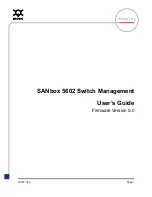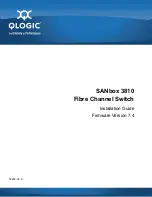
•
\
•
/
•
*
•
?
•
<
•
>
•
|
Using SNMP
For 200 Series software that includes the
module, you can configure SNMP groups and users that
can manage traps that the SNMP agent generates.
200 Series uses both standard public MIBs for standard functionality and private MIBs that support
additional switch functionality. All private MIBs begin with a "-" prefix. The main object for interface
configuration is in -SWITCHING-MIB, which is a private MIB. Some interface configurations also involve
objects in the public MIB, IF-MIB.
SNMP is enabled by default. The System Description web page, which is the page the displays after a
successful login and the
show sysinfo
command display the information you need to configure an
SNMP manager to access the switch.
Any user can connect to the switch using the SNMPv3 protocol, but for authentication and encryption,
you need to configure a new user profile. To configure a profile by using the CLI, see the SNMP section
in
ExtremeSwitching 200 Series: Command Reference Guide
.
To configure an SNMPv3 profile by using the web interface, use the following steps:
1 Select
System
>
Users
>
Accounts
from the navigation menu on the left side of the web interface.
2 From the Accounts menu, select
Add
to create a new user.
3 Enter a new user name in the
User Name
field.
4 Enter a new user password in the
Password
field and then retype it in the
Confirm
field.
To use SNMPv3 Authentication for this user, set a password of eight or more alphanumeric
characters.
5 To enable authentication, use the Authentication Protocol menu to select either
or SHA for the authentication protocol.
6 To enable encryption, use the Encryption Protocol menu to select
DES
for the encryption scheme.
Then, enter an encryption code of eight or more alphanumeric characters in the
Encryption Key
field.
7 Click
Submit
.
To access configuration information for SNMPv1 or SNMPv2, click and click the page that contains the
information to configure.
Using the Command-Line Interface
The CLI is a text-based way to manage and monitor the system. You can access the CLI by using a direct
serial connection or by using a remote logical connection with Telnet or SSH.
Getting Started
ExtremeSwitching 200 Series: Administration Guide
22
















































